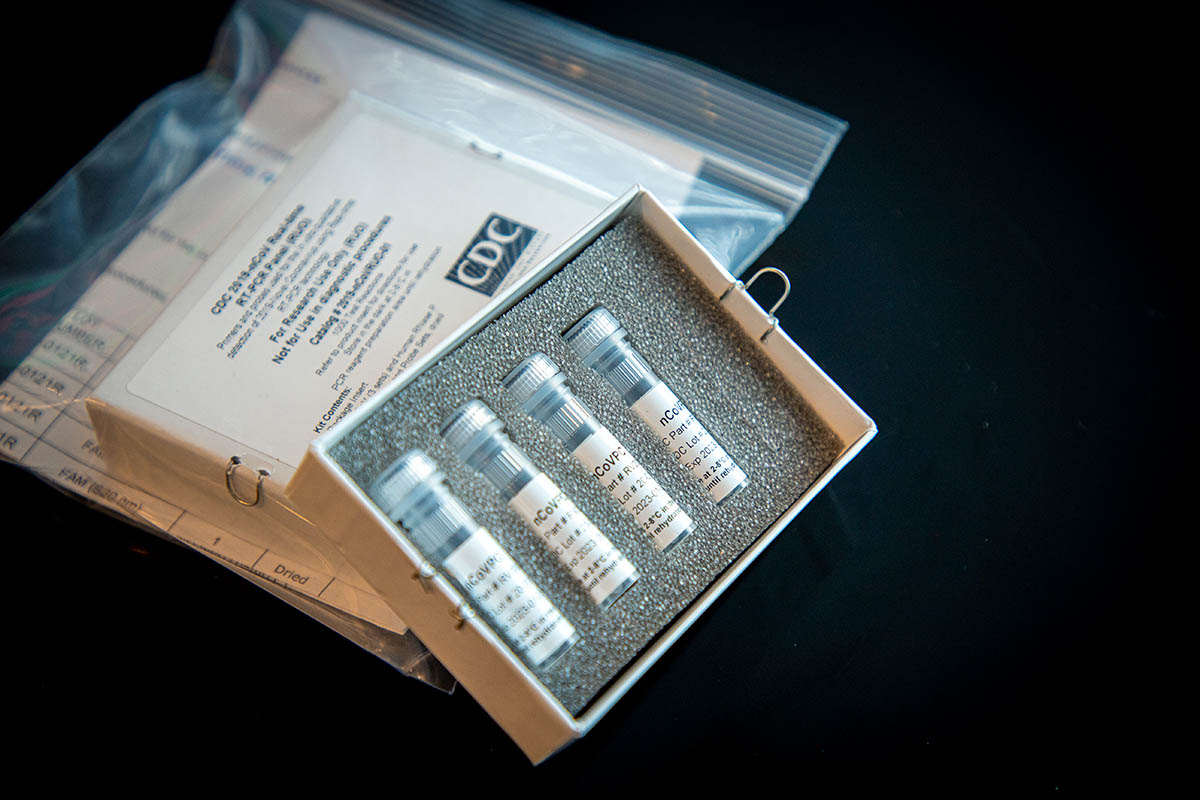
The Science Media Centre hosted an online media briefing with Professor David Murdoch on testing for COVID-19.
Professor David Murdoch is Dean and Head of Campus at University of Otago, Christchurch and is a clinical microbiologist.
Some of Professor Murdoch’s briefing has been excerpted into a Q&A – the full briefing is available here.
What is the process for COVID-19 testing?
“The only established test that is being used globally to test for COVID-19 on scale is what we call a PCR test. This is a test that detects the genetic material of the virus – the RNA – in the sample. So basically it’s testing presence or absence of the virus in a sample and because we know the virus is in the highest concentrations in the very back of the nose – that’s where it replicates – that’s where the samples come from.
“The testing’s being done at I think at least seven laboratories in New Zealand at the moment, and the test itself – once a sample has reached the laboratory – tends to be tested usually around four hours. It’s batch tested, which means that as a sample arrives it doesn’t necessarily get tested immediately, they wait until they get a large batch then test them in a batch typically early in the day. So although I say four hours, that’s just the testing – it’s got to arrive at the right time of the day, the testing process, then afterwards there’s checking and then relaying the result to whoever needs to know. So ideally getting a result back within a day – depending on where you are in the country it might be a bit longer than that. But that’s the intention.”
How effective is the test? Does it pick up positive cases most of the time?
“The experience so far is it’s a reliable test. There’s no perfect test in the world for any infectious disease, so there will always be occasional false positives and false negatives. Our understanding is that they are relatively low and this is a good test, and that would be consistent with the experience we have with other similar viruses. We know this type of test works really well – so yes it is a reliable test although occasionally we may get a false negative.”
The number of positive cases seems to be trending down – are we testing widely enough to see an actual trend there?
“I think what we’re seeing is a decreasing number of cases per day at a time when we’ve ramped up the testing around the country and overall positivity rate – that’s the proportion of samples we test that are positive – is tracking it looks like less than 2% so a very small proportion. That would indicate we are testing a good number of patients. In fact, it’s a crude measure the amount of testing per capita – we are amongst the top of the world. We’re in the top eight countries in the world along with Iceland, Switzerland and Norway in terms of the numbers we’re testing.
“Of course the question is are we reaching all of New Zealand? And that’s a really important question. The testing stations have been designed to try and reach everywhere, but certainly, the indications are good – this is what we want to see at this stage.”
Can you explain what surveillance testing means and what it would look like in New Zealand?
“In the current testing strategy … the concern would be: are we actually getting every case? Are there other testing strategies that we could put into place that would give us confidence that there isn’t a lot of ongoing transmission that we’re not aware of. And this is a really crucial part of the elimination strategy because we need to be confident that it’s working and confident that the numbers – assuming they continue to go down – will stay down.
“This could mean broadening the case definition that gets tested – although it’s fairly broad at the moment – so that we’re testing more people. It could be targeting certain groups that are particularly vulnerable or at-risk. And there’s always the talk of testing people without symptoms. It’s actually a little bit of a dangerous area because we don’t test performance in that setting but certainly a case could be made for certain people just to add extra confidence. It won’t be a very efficient way of going about it because there would be lost of negatives likely. But if we just want to be confident that certain groups don’t have the virus, that could be another strategy as well.”
Do we have the capacity in New Zealand to keep boosting up the testing, both in terms of capacity and supplies?
“This is really important – we’ve got unprecedented global demand, everyone wants the test, and then there are the consumables that come with it and a lot of those consumables are imported. That is the biggest worry for diagnostic labs at the moment, in fact, the concern is not about the number of labs that are testing – arguably we are probably okay – it is actually about getting that supply chain for the length of time that we need it. So that’s the major concern at the moment.”
